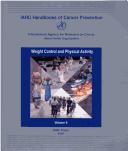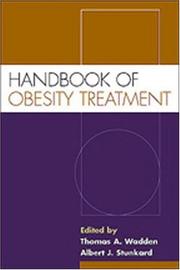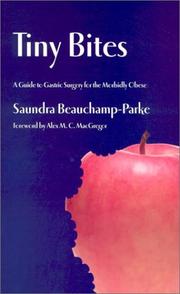| Listing 1 - 10 of 14 | << page >> |
Sort by
|

ISBN: 928323006X Year: 2002 Volume: 6 Publisher: Lyon IARC Press
Abstract | Keywords | Export | Availability | Bookmark
 Loading...
Loading...Choose an application
- Reference Manager
- EndNote
- RefWorks (Direct export to RefWorks)
Body weight --- Congresses --- Physical fitness
Article
Abstract | Keywords | Export | Availability | Bookmark
 Loading...
Loading...Choose an application
- Reference Manager
- EndNote
- RefWorks (Direct export to RefWorks)
ABSTRACT To determine the factors affecting agonistic interactions after regrouping, 24 pigs were allocated to six pens that each had a box. Half of the pigs were experienced in using the box. One castrated male and one female pig were transferred from each pen to another pen at random. The number of pigs attacked was particularly large for the pigs that had no experience in using the box and were transferred on the first day (P<0.05). The duration of access to the box was markedly longer for the pigs that had experience in using the box and were not transferred on the first day (P<0.05). The number and duration of attacks were significantly larger and longer toward unfamiliar individuals than toward familiar ones (both P< 0.01). The number of attacks toward the same sex was significantly larger than toward the opposite sex (P<0.01). A negative correlation was found between the number of agonistic interactions on the first day and the range of body weights in the pen mates (r=-0.78, P=0.07). In conclusion, regrouping with unfamiliar individuals should be avoided, but when unavoidable, the following methods are recommended to reduce agonistic interactions: (1) ensure the intruders are experienced in using a box, (2) move experienced intruders in with residents that have no experience in using a box, (3) mix different sexes, and (4) have wide variations in body weights in a pen
Access. --- Agonistic. --- Attacks. --- Body weight. --- Body-weight. --- Boxes. --- Duration. --- Experience. --- Female. --- Interaction. --- Interactions. --- Intruder. --- Male. --- Method. --- Pen. --- Pig. --- Pigs. --- Regrouping. --- Sex. --- Sexes. --- Variation. --- Weight.
Article

Year: 2002
Abstract | Keywords | Export | Availability | Bookmark
 Loading...
Loading...Choose an application
- Reference Manager
- EndNote
- RefWorks (Direct export to RefWorks)
This study focused on the effects of different enriched environments for mice in a number of behavioral and physiological parameters in two routine laboratory testing procedures -- potency testing for tetanus vaccine and stress induced hyperthermia. The variability in the results was studied by calculating and analyzing mean absolute deviations. Mice from enriched conditions weighed more and consumed more food than mice from standard housing conditions. However, mice from enriched conditions lost more body weight after being housed individually. Other physiological parameters showed no differences. Mice from standard conditions were more active in an open field, suggesting a tendency to over-respond to various stimuli in a testing environment. Mice from enriched environments were more tranquil and easier to handle. The enrichment did not influence the variability in any of the parameters measured, although earlier results and results of other authors suggest that the effects on the variability in results are parameter dependent. When enrichment does not influence variability, there is no reason for not introducing cage enrichment and by doing so contributing to the animals' welfare.
Animal. --- Animals. --- Body weight. --- Body-weight. --- Cage. --- Enriched environment. --- Enriched. --- Enrichment. --- Environment. --- Environmental enrichment. --- Environments. --- Field. --- Food. --- Housing conditions. --- Housing. --- Hyperthermia. --- Laboratory. --- Mice. --- Open field. --- Open-field. --- Parameters. --- Physiological. --- Potency. --- Stimuli. --- Stress. --- Variability. --- Variation. --- Weight. --- Welfare.

ISBN: 1572307226 Year: 2002 Publisher: New York The Guilfrod Press
Abstract | Keywords | Export | Availability | Bookmark
 Loading...
Loading...Choose an application
- Reference Manager
- EndNote
- RefWorks (Direct export to RefWorks)
025069.jpg --- Eetstoornissen --- Obesitas --- Obesity. --- Medische psychologie --- Ontwikkelingspsychologie --- gezondheidspsychologie --- speciale problemen --- gezondheidspsychologie. --- speciale problemen. --- Obesity --- Adiposity --- Corpulence --- Fatness --- Overweight --- Body weight --- Metabolism --- Nutrition disorders --- Disorders
Dissertation
ISBN: 9075092326 Year: 2002 Publisher: Groningen Drukkerij "de Regenboog"
Abstract | Keywords | Export | Availability | Bookmark
 Loading...
Loading...Choose an application
- Reference Manager
- EndNote
- RefWorks (Direct export to RefWorks)
Renal Dialysis --- Energy Intake. --- Body Weight. --- Anthropometry. --- Kidney Failure, Chronic --- Dietary Proteins --- Anthropology, Physical --- Body Composition --- Body Weights and Measures --- Body Weights --- Weight, Body --- Weights, Body --- Obesity --- Caloric Intake --- standards. --- diet therapy. --- administration & dosage. --- Theses --- Energy Intake --- Body Weight --- Anthropometry --- standards --- diet therapy --- administration & dosage --- Calorie Intake --- Intake, Calorie --- Intake, Energy
Article
Abstract | Keywords | Export | Availability | Bookmark
 Loading...
Loading...Choose an application
- Reference Manager
- EndNote
- RefWorks (Direct export to RefWorks)
We examined the effects of the absence of the pineal gland on testicular maintenance and regression in adult male Mongolian gerbils. Pinealectomized and control gerbils were maintained in different photoperiods (0 L, 8 L, 14 L, or 24 L), and body weights and testicular maintenances were investigated. Testes sizes and body weights were measured every week for ten weeks. Body weight did not change during the course of the experiment in all photoperiods. In testes weights, there was no difference between pinealectomized and control groups in the 14 L photoperiod (p > 0.05), while there was a significant difference between pinealectomized and control groups in 0 L, 8 L, and 24 L photoperiods; in control groups there was a regression in testes weights. These results demonstrate that photoperiod does not affect the regulation of body weight, but it does affect the reproductive system of Mongolian gerbils. Thus, the pineal gland plays an important role. in the transduction of photoperiodic information
Absence. --- Adult. --- Body weight. --- Body-weight. --- Boxes. --- Control. --- Experiment. --- Gerbil. --- Gerbils. --- Gland. --- Gonads. --- Group. --- Hamsters. --- Maintenance. --- Male meadow voles. --- Male mongolian gerbils. --- Male. --- Melatonin. --- Meriones unguiculatus. --- Meriones-unguiculatus. --- Mesocricetus-auratus. --- Mongolian gerbil. --- Mongolian gerbils. --- Mongolian-gerbil. --- Pelage color. --- Phodopus-sungorus. --- Photoperiod. --- Pineal. --- Play. --- Regulation. --- System. --- Time. --- Turkey. --- Unguiculatus. --- Weight.
Article

Year: 2002
Abstract | Keywords | Export | Availability | Bookmark
 Loading...
Loading...Choose an application
- Reference Manager
- EndNote
- RefWorks (Direct export to RefWorks)
From welfare perspective group housing of mice is preferred over individual housing. Group housing of male laboratory mice, however, often leads to problems due to excessive aggressive behaviour. In our search for management and housing modifications to decrease aggression in group-housed male laboratory mice, we have tested the effect of two types of environmental enrichment--nesting material and shelter--on aggressive behaviour after cage cleaning and after a 1 h isolation period. Severity of wounds, urinary corticosterone levels, body weight, food and water intake and several post-mortem parameters were also monitored. The results indicated that type of enrichment strongly affected both aggressive behaviour and physiological parameters. Overall, nesting material reduced aggressive behaviour, while a shelter increased aggressive behaviour compared to control housing. This effect was also reflected in the number of wounds counted. Furthermore, during shelter housing mice gained less body weight, drank less and showed higher corticosterone levels, while in housing conditions with nesting material, mice ate less. We conclude that providing male mice with nesting material reduces aggression between male mice, and may, thus, be promoted as being beneficial to their physical health and psychological well-being.
Aggression. --- Aggressive. --- Behaviour. --- Body weight. --- Body-weight. --- Cage. --- Cleaning. --- Control. --- Corticosterone. --- Enrichment. --- Food. --- Group housing. --- Group. --- Health. --- Housing conditions. --- Housing. --- Individual housing. --- Isolation. --- Laboratory mice. --- Laboratory. --- Level. --- Male-mice. --- Male. --- Management. --- Mice. --- Nesting material. --- Parameters. --- Physical. --- Physiological. --- Psychological well-being. --- Search. --- Shelter. --- Stress. --- Weight. --- Welfare. --- Well-being.
Article
Year: 2002
Abstract | Keywords | Export | Availability | Bookmark
 Loading...
Loading...Choose an application
- Reference Manager
- EndNote
- RefWorks (Direct export to RefWorks)
Previous experimental work has shown modest and variable production and welfare benefits for the lactating sow and piglets when sows are allowed to separate themselves temporarily from their piglets, or when piglets have access to a communal creep area sufficiently attractive that they spend substantial time away from the sow. This experiment tested the effect of both features together. Sows from experimental litters could enter a get-away area separated from the piglets where, after 12 days of lactation, they could mingle with two other sows. Litters had access to a creep area where they could mingle with piglets from two other litters after 14 days of age. Eleven experimental cohorts consisting of three sows and their litters were tested in this way. For the 12 control cohorts, also of three litters each, sows could not get-away from their piglets, and piglets could not mingle with other litters. Experimental sows spent over 14 h per day away from their piglets by the end (day 27) of lactation. Experimental sows also nursed their litters less often than controls, decreasing to almost 30% less by the end of lactation (P < 0.01), and consumed less food during lactation (P < 0.05). There was no significant effect of treatment on sow weight loss or weaning-to-oestrus interval. Piglets from experimental litters spent over 40% of their time in the pens of other litters by the end of lactation, and spent significantly (P < 0.05) more time than control piglets in the creep area. Experimental piglets ate more creep feed before weaning (P < 0.001), but tended to gain less weight (P = 0.05). After weaning, these piglets continued to cat more (P < 0.05) and gained more weight (P < 0.05), such that the average body weights were similar for experimental and control piglets on day 42 (11.8 +/- 0.26 kg versus 11.7 +/- 0.25 kg; N.S.). We observed some agonistic behaviour between experimental sows when they were first allowed to interact and between experimental piglets when mix
Access. --- Age. --- Aggression. --- Agonistic behaviour. --- Agonistic. --- Alternative housing. --- Area. --- Behaviour. --- Body weight. --- Body-weight. --- Cat. --- Control. --- Demand. --- Experiment. --- Food. --- Group-housed sows. --- Growth. --- Housing system. --- Housing. --- Lactation. --- Level. --- Mixing. --- Nursing. --- Patterns. --- Pen. --- Performance. --- Pig-housing. --- Piglets. --- Pigs. --- Post weaning. --- Production. --- Socialisation. --- Sow. --- Sows. --- Suckling behavior. --- System. --- Systems. --- Time. --- Treatment. --- Weaning. --- Weight. --- Welfare. --- Work.

ISBN: 1846422868 0585471169 9780585471167 9781846422867 9781843107040 184310704X 184310704X Year: 2002 Publisher: London ; Philadelphia : Jessica Kingsley,
Abstract | Keywords | Export | Availability | Bookmark
 Loading...
Loading...Choose an application
- Reference Manager
- EndNote
- RefWorks (Direct export to RefWorks)
Obesity --- Gastrointestinal system --- Gastro-intestinal system --- Gastrointestinal tract --- GI tract --- Tract, Gastrointestinal --- Tract, GI --- Alimentary canal --- Digestive organs --- Adiposity --- Corpulence --- Fatness --- Overweight --- Body weight --- Metabolism --- Nutrition disorders --- Surgery --- Disorders
Article
Abstract | Keywords | Export | Availability | Bookmark
 Loading...
Loading...Choose an application
- Reference Manager
- EndNote
- RefWorks (Direct export to RefWorks)
Blood samples were collected at 14 weeks of age (white blood cells (WBC), red blood cells (RBC), haemoglobin (HGB), and haematocrit (HCT) were analysed). At 15 weeks of age, the animals were euthanized by CO2 in their home cages, and final body weight and organ weights (heart, liver, kidney, adrenal, spleen and uterus) were recorded immediately.Although nearly all the test variables were not affected by environmental enrichment in their mean values, the enriched group showed higher coefficients of variation in many variables, and strain differences of both housing conditions were not consistent. The influences of enrichment were shown to be strain- and test-dependent. Such effects may lead to an increase in the number of animals which is necessary or may change the experimental results, especially when a study, using enriched housing conditions, focuses on strain differences.Since the same enrichment design can result in different influences, a positive or a negative or no adverse 'effect, due to the strain and the variables studied, researchers need to collect more information before enrichment designs are introduced into experimental plans Currently, environmental enrichment is a very common means of improving animal wellbeing, especially for laboratory animals. Although environmental enrichment seems to be a possible way for improving the well-being of animals, the consideration of housing laboratory animals should not only focus solely on animal well-being, manpower and economics but also on the precision and accuracy of the experimental results. The purpose of the present study was to evaluate the effects of enriched cages (nest box, nesting material, climbing bar) on body weight, haematological data and final organ weights.BALB/c, C57BL/6 and A/J mice, originated from Harlan Winkelmann, were used for the experiments-16 animals of each strain. Animals at 3 weeks of age were marked and separated randomly to enriched or non-enriched cages, in groups of four, half for each housing condition. Both cages were type III Makrolon cages, only the enriched cages contained a nest box, a wood bar for climbing and nesting material. Animals were kept in a clean animal room under specific pathogen free (SPF) conditions. Body weights were recorded every week.
Adrenal. --- Age. --- Animal. --- Animals. --- Behavior. --- Blood. --- Body weight. --- Body-weight. --- Boxes. --- Cage. --- Dba/2j. --- Design. --- Enriched. --- Enrichment. --- Environmental enrichment. --- Group. --- Haematocrit. --- Housing conditions. --- Housing. --- Inbred mice,strain differences,environmental enrichment,haematological analysis,organ weight. --- Increase. --- Kept. --- Laboratory animals. --- Laboratory mice. --- Laboratory-animals. --- Laboratory. --- Mice. --- Need. --- Nest box. --- Nest. --- Nesting material. --- Number of animals. --- Purpose. --- Rats. --- Rbc. --- Red blood cells. --- Strain differences. --- Stress. --- Test. --- Uterus. --- Variation. --- Weight. --- Well-being.
| Listing 1 - 10 of 14 | << page >> |
Sort by
|

 Search
Search Feedback
Feedback About
About Help
Help News
News